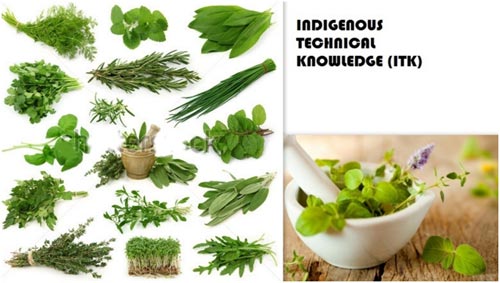 |
|
|
Translate this page in your preferred language:
|
| INDIGENOUS TECHNICAL KNOWLEDGE |
|
Back |

Introduction- Indigenous Technical Knowledge (ITK)
- Indigenous Technical Knowledge (ITK) is the one with which we are living since ages, the knowledge in our roots, knowledge in our day to day life. This knowledge transcended to us from our ancestors and is successful from time immemorial. Indigenous knowledge came into being even when no one had thought of medical or veterinary sciences and is still being practices by elderly people.
- It is presumed that farmers have developed indigenous technical knowledge (ITKs) using local herbs, shrubs and plants for the welfare of their animals through their accumulated experiences, which is valuable resource for livestock development.
- In India we have two kinds of veterinary knowledge, the one is written and the other is unwritten folk knowledge that has many branches depending upon the community, culture, their geographical location and the availability of the plants. In some places the plants used for some ailment is same as used by the ayurveda, but at the same time different plants or we can say unique plants are used for the same ailment in other places.
- Indigenous Technical Knowledge (ITK) in animal husbandry is in use since the human civilization by the farmers, animal owners and other practitioners. In spite of advancement in scientific knowledge in animal husbandry, these practices still remain in use by the vast majority of the farming community particularly in resource-poor farming situations, without the knowledge of its scientific rationality.
- Significant contributions to the global knowledge have originated from the indigenous people, for instance in medicine and veterinary medicine with their intimate understanding of their environments. Indigenous knowledge has developed and adapted continuously to gradually changing environments and passed down from generations and closely interwoven with people’s culture. Indigenous knowledge is also the social capital of the poor; their main asset is to invest in the struggle for survival, to produce food, to provide for shelter or to achieve control of their own lives.
|
|
|
Back |
|
|
Developed by :
|
Jaspal Singh
(Ex. M.V.Sc Scholar ) |
Dr. Pranav Kumar
(Assistant Professor)
|
Amandeep Singh
(Final Year B.V.Sc & AH student) |
|
|
|
|
|
|
Scroll
|
Division of Veterinary and Animal Husbandry Extension Education
Faculty of Veterinary Sciences and Animal Husbandry, R.S. Pura, SKUAST Jammu |
|

